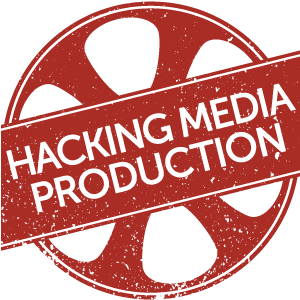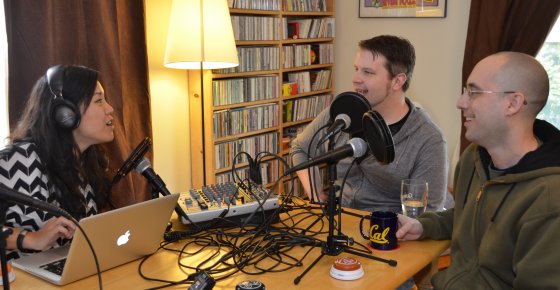Interview with the cast of Good Job Brain (Time 26 min.) about creating really fun trivia games.
Successful gaming always boils down to one core element: is it fun? The same can be said of trivia games. Finding that core “fun” element of a trivia game isn’t easy. What makes one trivia game more entertaining to play than another trivia game?
 To learn how to create trivia games that don’t suck I spoke with the cast of Good Job Brain, a really entertaining weekly trivia podcast. On this episode are three members – Karen Chu (@mompeche), Colin Felton (@colin13), and Chris Kohler (@cobunheat) – of the four person cast. At the very end of the episode the fourth member, Dana Nelson (@ItsKindaSweet), makes a pop in appearance. And stay tuned to the end of the podcast when I quiz the Good Job Brain cast with my own trivia game. Here’s what we discussed.
To learn how to create trivia games that don’t suck I spoke with the cast of Good Job Brain, a really entertaining weekly trivia podcast. On this episode are three members – Karen Chu (@mompeche), Colin Felton (@colin13), and Chris Kohler (@cobunheat) – of the four person cast. At the very end of the episode the fourth member, Dana Nelson (@ItsKindaSweet), makes a pop in appearance. And stay tuned to the end of the podcast when I quiz the Good Job Brain cast with my own trivia game. Here’s what we discussed.
Tips for producing playable and entertaining trivia games
Has a relation to something you know: Felton notes that just asking for a fact that’s not connected to another piece of useful information is not entertaining. So for example, asking what year the electric toothbrush was created is boring. But asking what failed experiment resulted in the electric toothbrush is more entertaining. It falls under the “Did you know?” aspect.
 Scratch at brain for recall: It’s far easier to present information and ask, “Do you remember this?” rather than not presenting the information and requiring the person to drum up the information from the deep recesses of their brain. For example, explained Kohler, if you present names of people in a sitcom you can easily remember that they were or were not in the show. But if you just ask a person to give you the names of the people in the show that’s far harder and therefore less fun.
Scratch at brain for recall: It’s far easier to present information and ask, “Do you remember this?” rather than not presenting the information and requiring the person to drum up the information from the deep recesses of their brain. For example, explained Kohler, if you present names of people in a sitcom you can easily remember that they were or were not in the show. But if you just ask a person to give you the names of the people in the show that’s far harder and therefore less fun.
Your audience “should” know the answer: “If you ask questions, but I can’t think of the answer but I know I should be able to think of the answer – and then when you tell me the answer I say, ‘Oh, right,'” that’s an engaging and exciting game,” said Kohler.
Don’t want your audience angry at the creator: Your want your audience to believe they could have answered the question. If their response is, “Oh well, that was a stupid question,” they didn’t learn anything and they were annoyed because they didn’t think there was any chance they could have gotten it.
The medium dictates how you present the question: If trivia is being presented in written form you can look at it over and over again and ponder it. But with audio based trivia, like the Good Job Brain podcast, you hear the question once and it’s gone. Being that it’s audio there are ways you can play with that. For example, Chu has produced some games based on first lines of books. One way is to just read those lines. Another way she’s tried is to have a computer-generated voice read those lines. And similarly she had song lines rewritten in Elizabethan English and then had actors read them with Shakespearean flair. With all that manipulating can you still guess the song?
 Let your audience have fun not knowing the answers: The highest compliment they get is when someone says, “I don’t like trivia, but I like your show,” said Felton. Even if you don’t know the answers, the process of the game and the information learned from the game should be entertaining in itself.
Let your audience have fun not knowing the answers: The highest compliment they get is when someone says, “I don’t like trivia, but I like your show,” said Felton. Even if you don’t know the answers, the process of the game and the information learned from the game should be entertaining in itself.
A good question invites fun speculation: Even if you don’t know the answer right away, a question can be presented in a way that the players can make educated guesses based on the information presented. For example, Felton suggested the question, “What innovation in toothpaste making was debuted by Colgate in 1896?” Even if you don’t happen to know the answer off the top of your head there’s enough information there where you can start making educated guesses. You know Colgate. You know generally some of the advances of toothpaste over the years. And you also know what the country was like in 1896.
Follow up anecdotes: One of the ways Good Job Brain has become stickier, noted Kohler and Chu, is that they have follow up stories about each of the questions to breathe a little more life into the answer. This helps you remember the question and attaches you more to the information coming out of the show.
Triple check your facts: Don’t always rely on one source. Make sure you have multiple sources verifying your information. One comment on a website, even if it’s Wikipedia, doesn’t cut it.
If you can’t confirm, cover your ass: About ten percent of the time, they’ll see that all their fact checking is sourcing the same single piece of material. If that’s the case, they will add an addendum to say that the source of this information is only coming from one place, said Kohler.
 Wikipedia is a great starting point: They start most of their research at Wikipedia, but it’s only a starting point. It’s a great resource to find the core sources of information. Other sites they rely on for information include Snopes.com, SmokingGun.com, Google Books, The Straight Dope message boards, and etymology sites.
Wikipedia is a great starting point: They start most of their research at Wikipedia, but it’s only a starting point. It’s a great resource to find the core sources of information. Other sites they rely on for information include Snopes.com, SmokingGun.com, Google Books, The Straight Dope message boards, and etymology sites.
Game length should be seven questions or less than five minutes: While not a hard and fast rule, the Good Job Brain cast has found that seven questions or five minutes is good length of a game.
No trick questions: It doesn’t show good faith on the part of the question asker.
Connect with “Hacking Media Production”
 Thanks for supporting the show. Please subscribe to “Hacking Media Production” on iTunes, write a review, check out past episodes, and if you have any friends that make content for a living, please tell them to listen to the “Hacking Media Production” podcast. Thanks.
Thanks for supporting the show. Please subscribe to “Hacking Media Production” on iTunes, write a review, check out past episodes, and if you have any friends that make content for a living, please tell them to listen to the “Hacking Media Production” podcast. Thanks.




